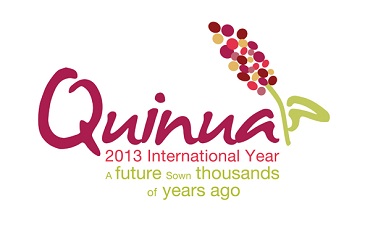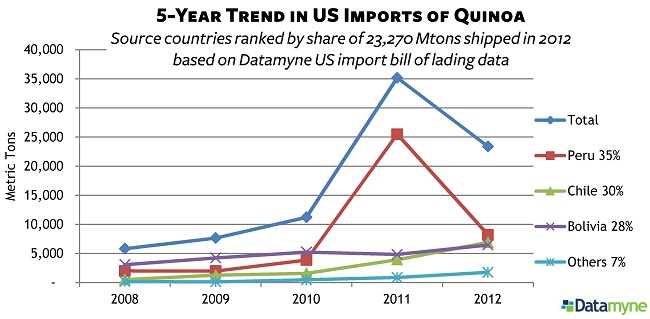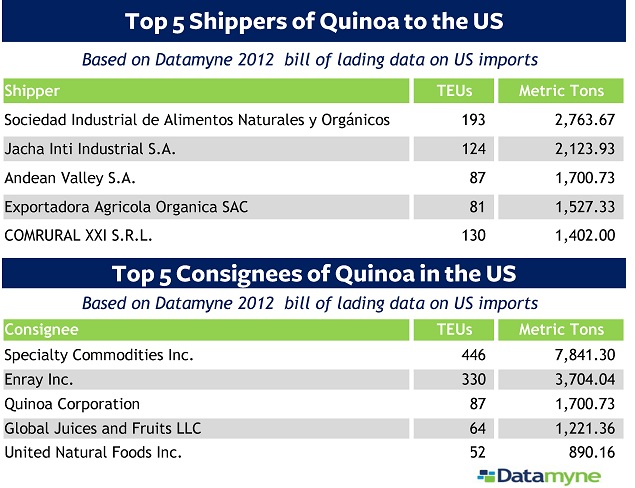The Columbian exchange continues with “a future sown thousands of years ago”
What better way to start the new year than with a forward-looking celebration of an historical legacy?
 The UN General Assembly has declared 2013 as the International Year of Quinoa (la Quinua). The declaration recognizes the ancestral sustainable practices of the Andean people who preserved the grain that offers solutions to a host of modern problems.
The UN General Assembly has declared 2013 as the International Year of Quinoa (la Quinua). The declaration recognizes the ancestral sustainable practices of the Andean people who preserved the grain that offers solutions to a host of modern problems.
Quinoa can grow under the harshest conditions, withstanding temperatures from -8° C to 38° C, it can be grown from sea level up to 4,000 meters above sea level, and it can withstand drought and poor soils. It is the only vegetal food that has all the essential amino acids, trace elements and vitamins while being gluten-free.
The International Year of Quinoa is intended to focus world attention on the role that quinoa’s biodiversity and nutritional value play in providing food security and nutrition and in poverty eradication around the world.
We’ve been paying attention to quinoa for some time. Quinoa is one of the indigenous crops Peru has leveraged to boost exports (see Peru Ramps up Ag Exports). Rising trade in quinoa was recognized with the assignment of its own 6-digit code (100850) for the first time in the World Customs Organization’s 2012 update of the Harmonized System (HS) (By the Numbers).
Certainly quinoa consumption is on the upswing in the US, where it’s won over the health-conscious and the gluten-averse. A sure sign that it’s going mainstream: How to Cook Fluffy, Tasty Quinoa on the trend-spotting Apartment Therapy blog.
The lack of an HS code prior to 2012 makes it hard to reconstruct trends based on Census data. Fortunately, Datamyne’s US import bill of lading data yields detailed records of waterborne shipments of quinoa, which we used to plot the five-year surge in demand through year-end 2012 (as of this week, enhanced data on US import shipments through 12/31/12 and original bill of lading data through 1/8/13 are available from Datamyne).
We also took a look at the companies shipping and importing quinoa to the US – the top 5 shippers and consignees are below.
A side note: If you look closely at the tables, you’ll see an exact match in the TEUs/Mtons shipped by Andean Valley and imported by Quinoa Corporation. It’s no coincidence. The bills of lading show that Andean Valley was Quinoa Corp’s sole source for imported quinoa in 2012, and Quinoa Corp was Andean Valley’s sole south-north trade customer. (Andean Valley has been developing its south-south export trade, starting with the Brazilian market, as this article explains.)





